In a bustling world filled with noise and chaos, finding moments of peace and tranquility becomes increasingly important. One way to create a serene oasis within your living space is by cultivating peace lilies. These elegant plants, with their graceful white blooms and lush green leaves, not only bring beauty but also embody a sense of calm and balance.
Whether you’re an experienced gardener or a novice with a green thumb, learning how to grow peace lilies can be a gratifying journey. Not only are they visually stunning, but they also have the added benefit of purifying the air, making them a perfect addition to any home or office.
In this comprehensive guide, we will delve into the art of nurturing peace lilies, from selecting the right location and providing optimal growing conditions to understanding their unique care requirements. With a little knowledge and a touch of patience, you’ll soon discover the joy of tending to these resilient plants and witnessing their graceful transformation.
Join us as we embark on a journey to unlock the secrets of cultivating peace lilies, allowing their serene presence to flourish and infuse your surroundings with tranquility.
#1. Light requirements
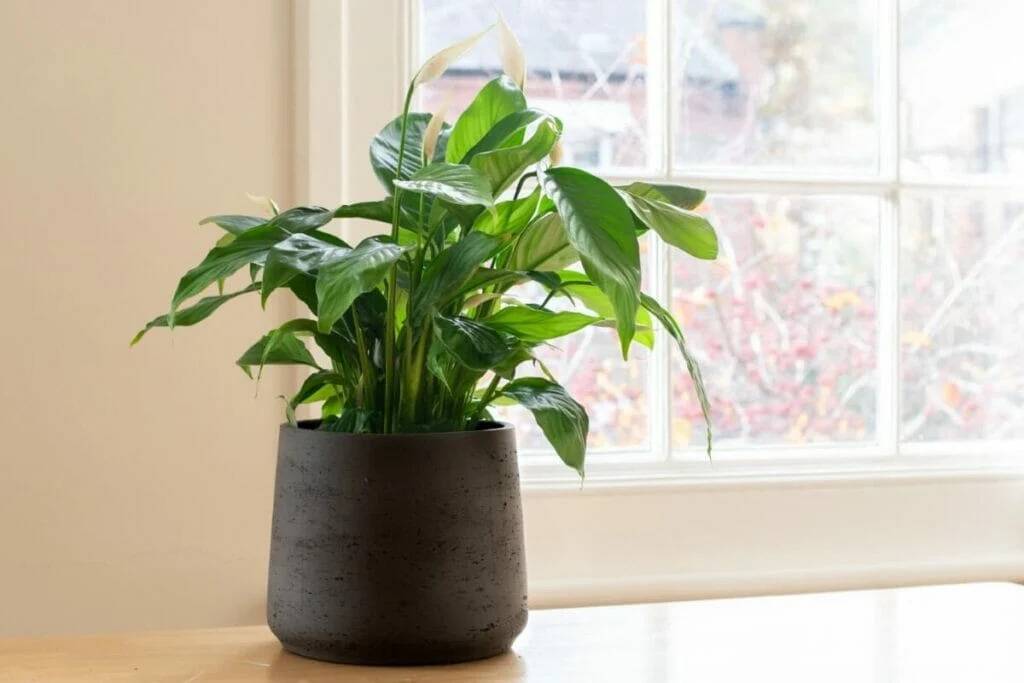 Source: Petal Republic
Source: Petal Republic
Peace lilies thrive in bright, indirect light. Avoid placing them in direct sunlight as it can scorch the leaves. Find a spot near a window with filtered light or a few feet away from a window.
#2. Temperature and humidity
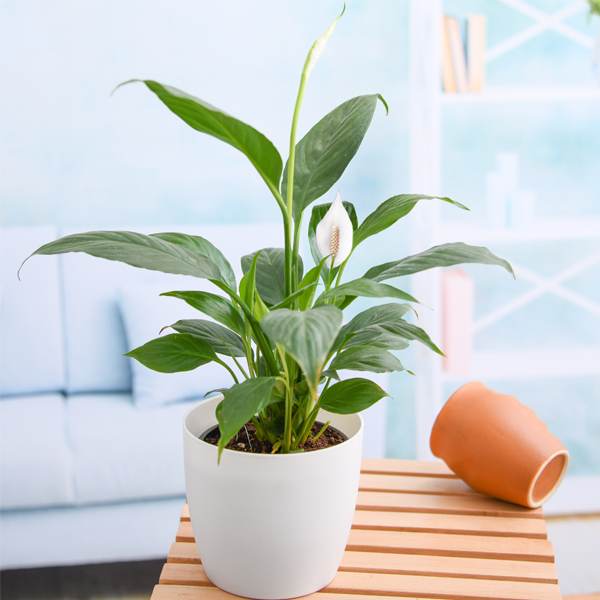 Source: Wild Roots
Source: Wild Roots
Peace lilies prefer temperatures between 65°F and 85°F (18°C to 29°C). They also enjoy high humidity levels, so misting the leaves or placing the plant on a tray filled with water and pebbles can help increase humidity.
#3. Watering
 Source: Bloomscape
Source: Bloomscape
Water the peace lily when the top inch of the soil feels dry to the touch. Be careful not to overwater or let the plant sit in standing water, as this can lead to root rot. Drain excess water from the saucer or pot after watering.
#4. Soil
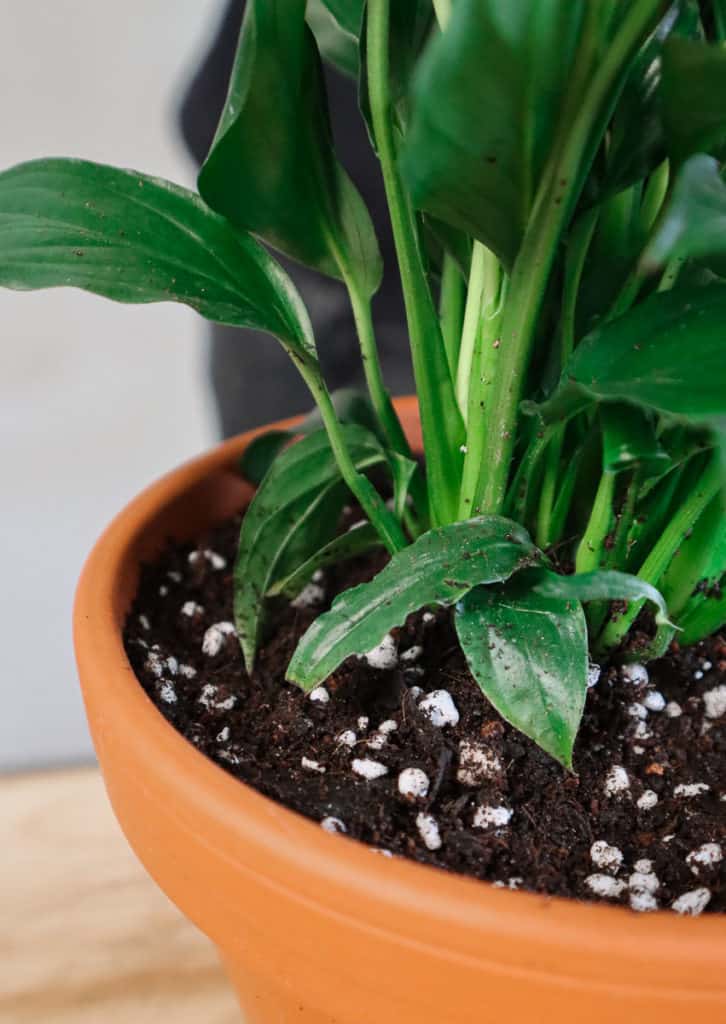 Source: Blooming Backyard
Source: Blooming Backyard
Use a well-draining potting mix that retains some moisture but doesn’t become waterlogged. A mix of peat moss, perlite, and vermiculite or a commercial potting mix suitable for houseplants should work well.
#5. Fertilizer
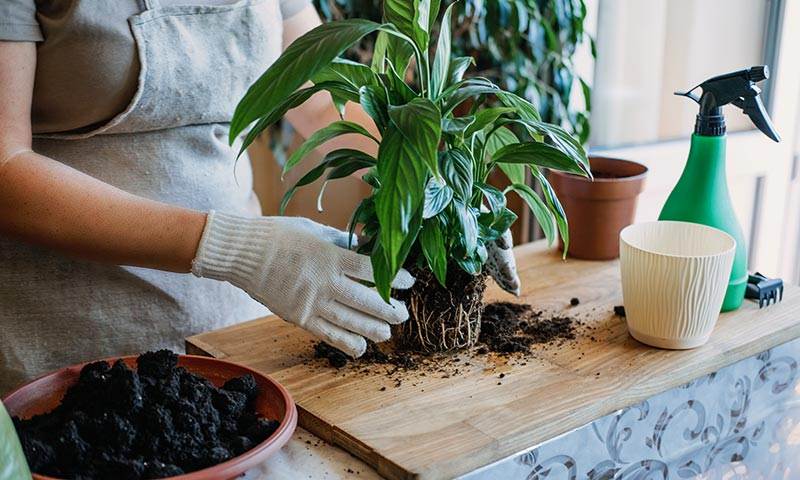 Source: Pennington Seed
Source: Pennington Seed
Feed the peace lily with a balanced houseplant fertilizer diluted to half the recommended strength every two months during the growing season (spring and summer). Avoid overfertilizing, as it can cause leaf burn.
#6. Pruning
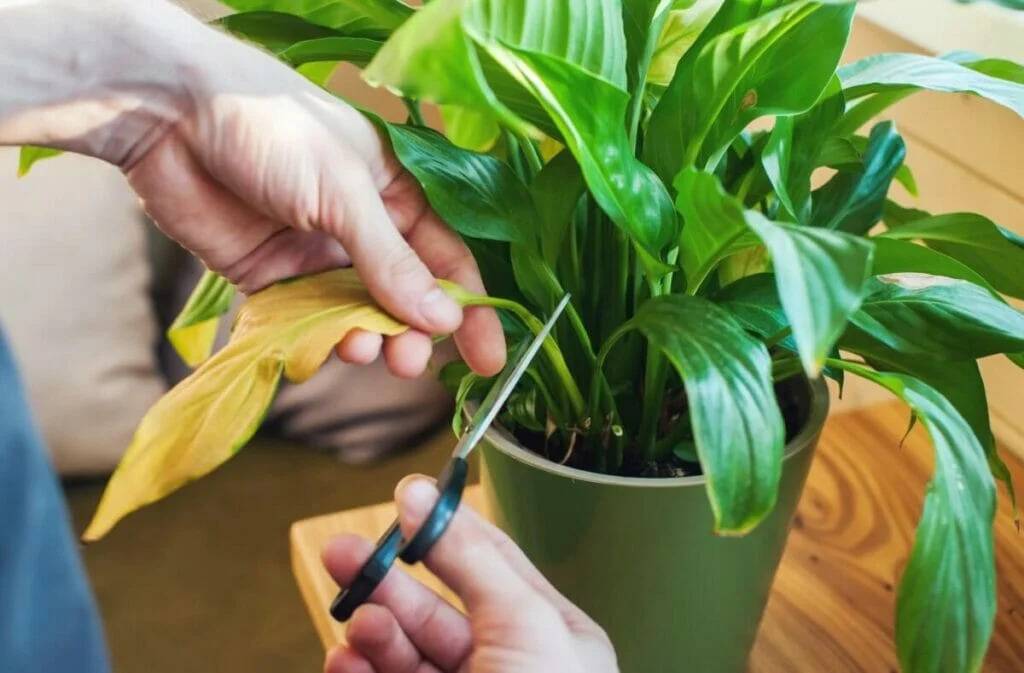 Source: Petal Republic
Source: Petal Republic
Remove any dead or yellowing leaves by cutting them off at the base of the stem. You can also trim back any leggy or overgrown stems to encourage bushier growth.
#7. Repotting
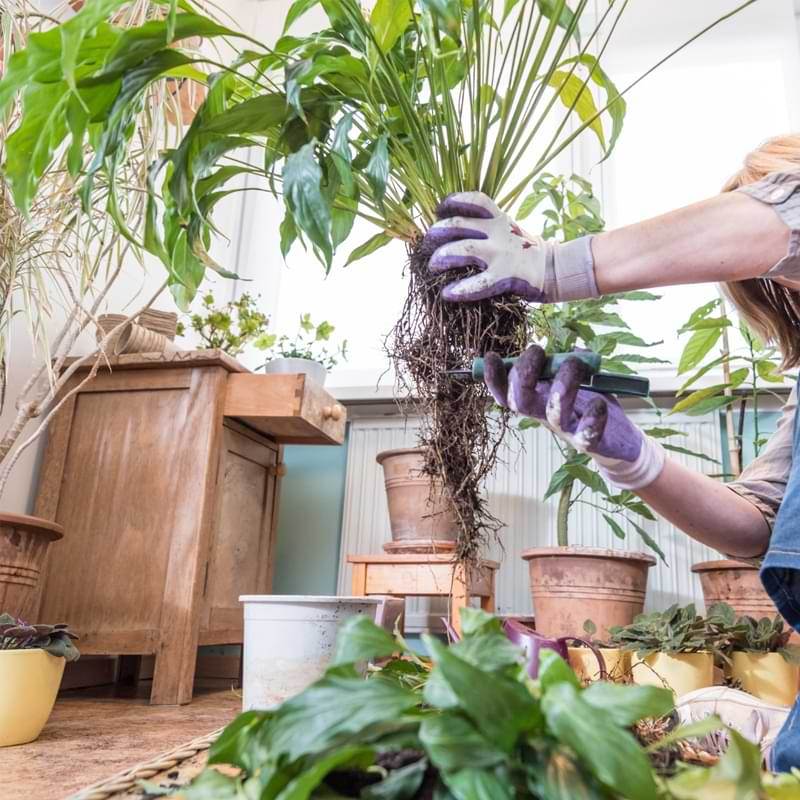 Source: The Houseplant Resource Center
Source: The Houseplant Resource Center
Peace lilies prefer slightly crowded root conditions, so you only need to repot them every two to three years or when the roots start to become overcrowded. Choose a pot that is one size larger and use fresh potting mix.
#8. Cleaning the leaves
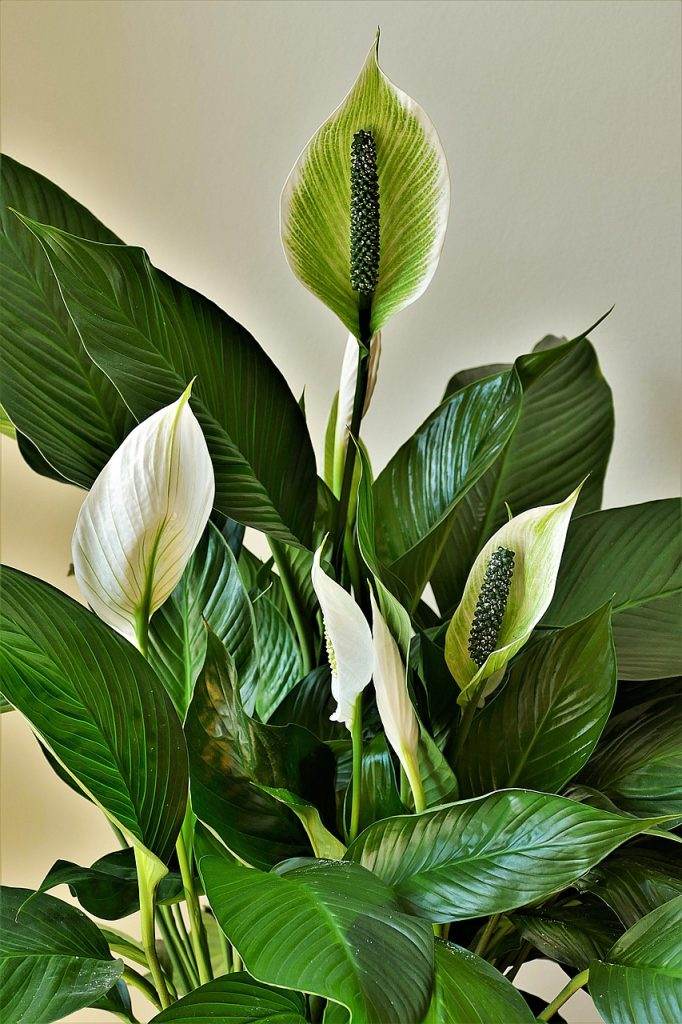 Source: PlantSnap
Source: PlantSnap
Peace lilies have large, glossy leaves that can accumulate dust over time, which may hinder their ability to photosynthesize efficiently. Wipe the leaves gently with a damp cloth or sponge periodically to keep them clean and free from dust.
#9. Brown tips on leaves
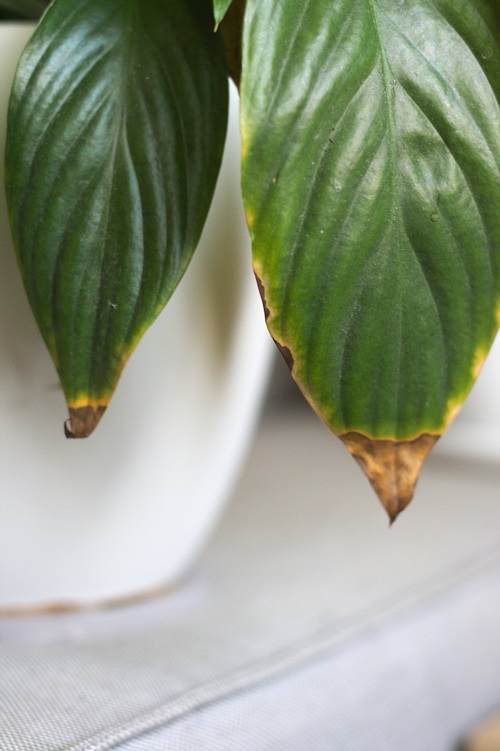 Source: Houseplant Central
Source: Houseplant Central
If the tips of the peace lily’s leaves turn brown, it could indicate that the plant is not receiving enough humidity. Increase humidity levels by misting the leaves, placing the plant on a humidity tray, or using a room humidifier.
#10. Dormancy period
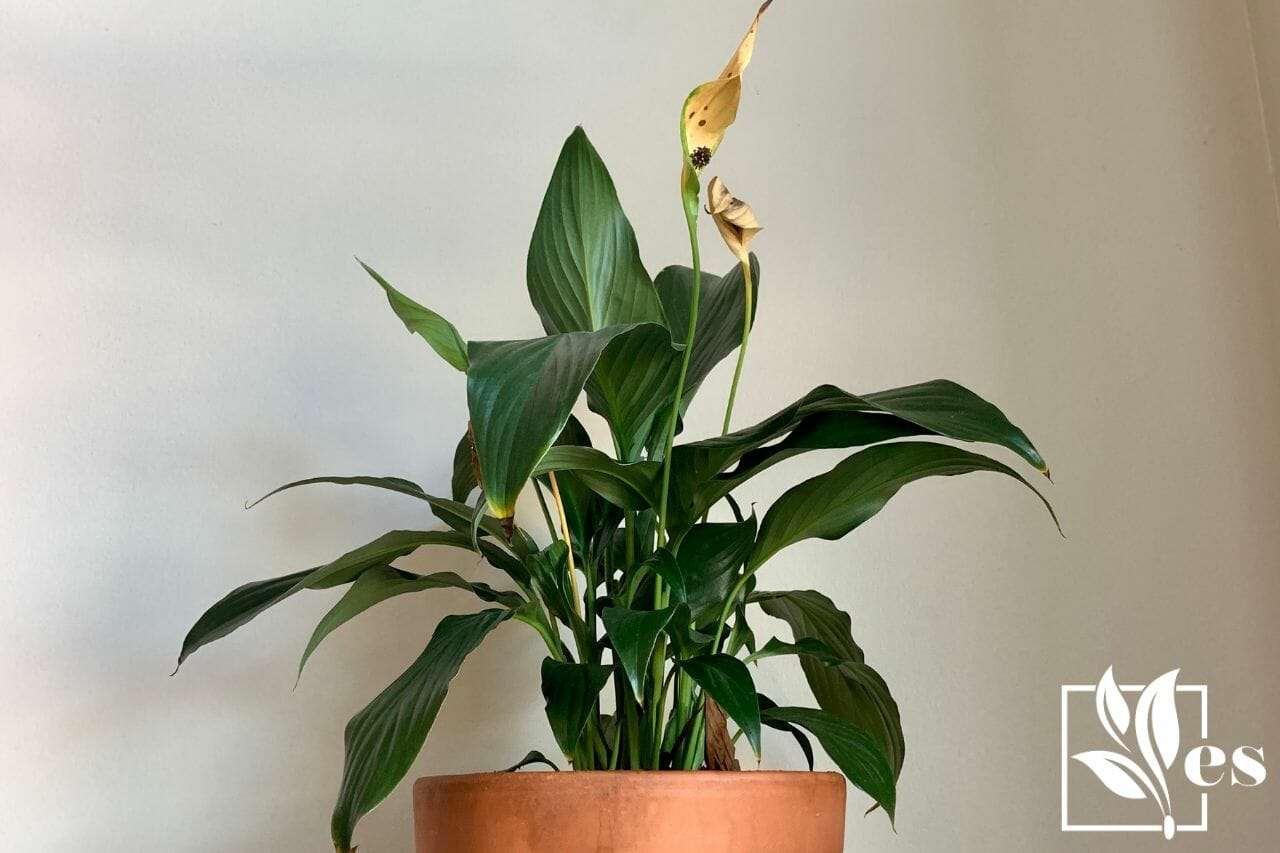 Source: Evergreen Seeds
Source: Evergreen Seeds
Peace lilies may enter a brief dormancy period during winter, especially if the temperature drops below their preferred range. They may stop producing new leaves or slow down their growth. During this time, reduce watering and avoid fertilizing until the plant shows signs of renewed growth.
#11. Flowering
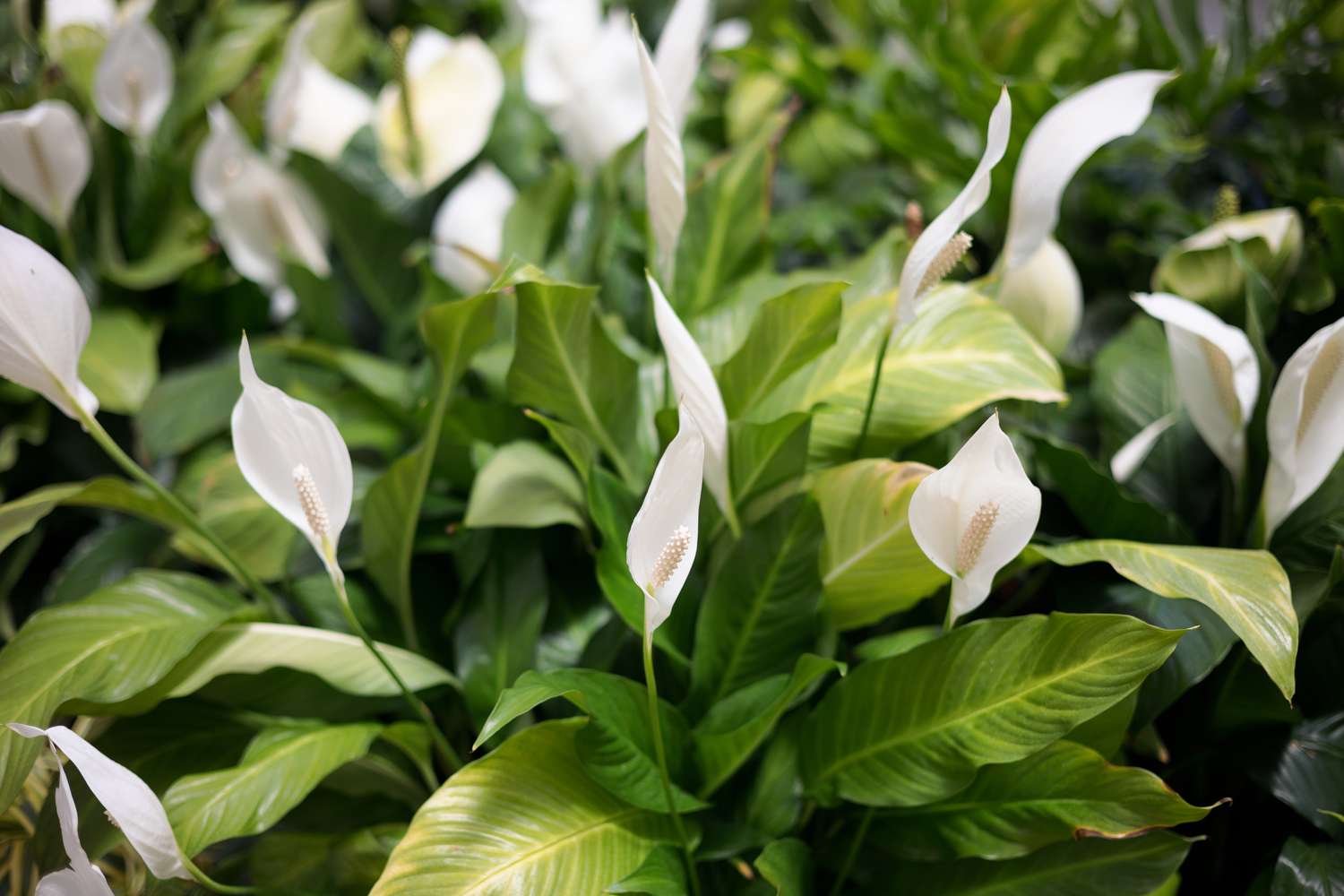 Source: Southern Living
Source: Southern Living
Peace lilies are known for their beautiful white flowers, which can bloom throughout the year. However, if your plant is not flowering, it may be due to insufficient light or improper care. Ensure that the plant receives adequate indirect light and is not stressed by overwatering or extreme temperatures.
#12. Pest control
 Source: Petal Republic
Source: Petal Republic
#13. Air purification
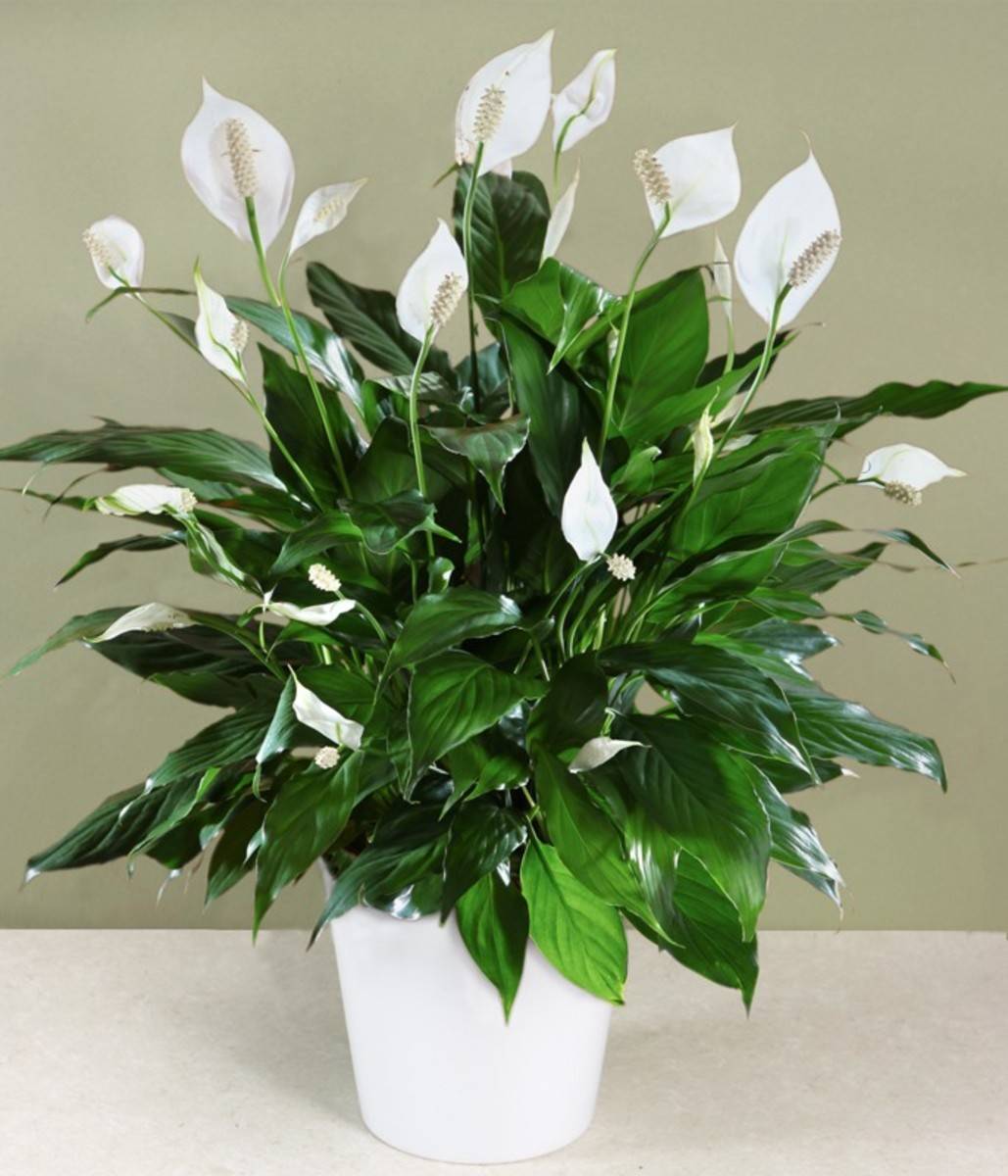 Source: Dengarden
Source: Dengarden
Peace lilies are known for their ability to purify the air by removing toxins like formaldehyde, benzene, and carbon monoxide. Place them in various rooms of your home or office to improve indoor air quality.
